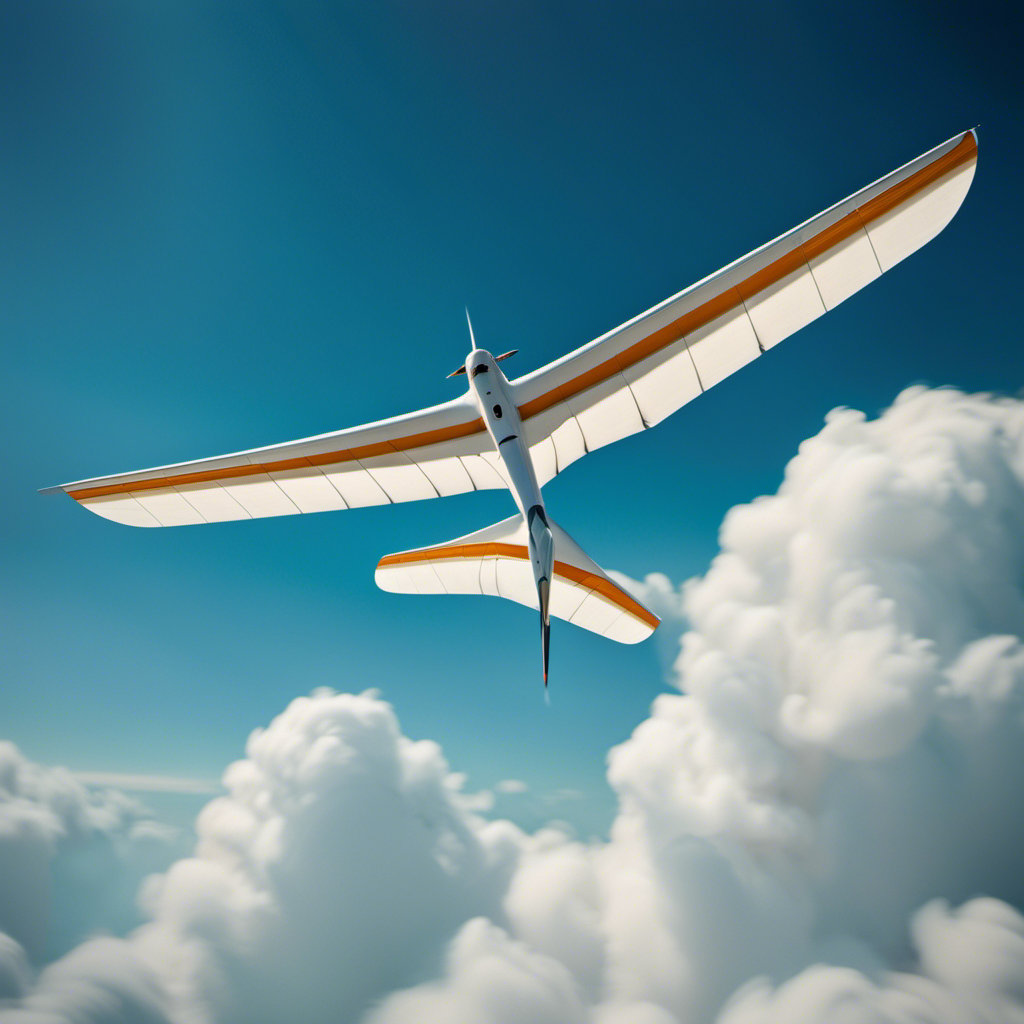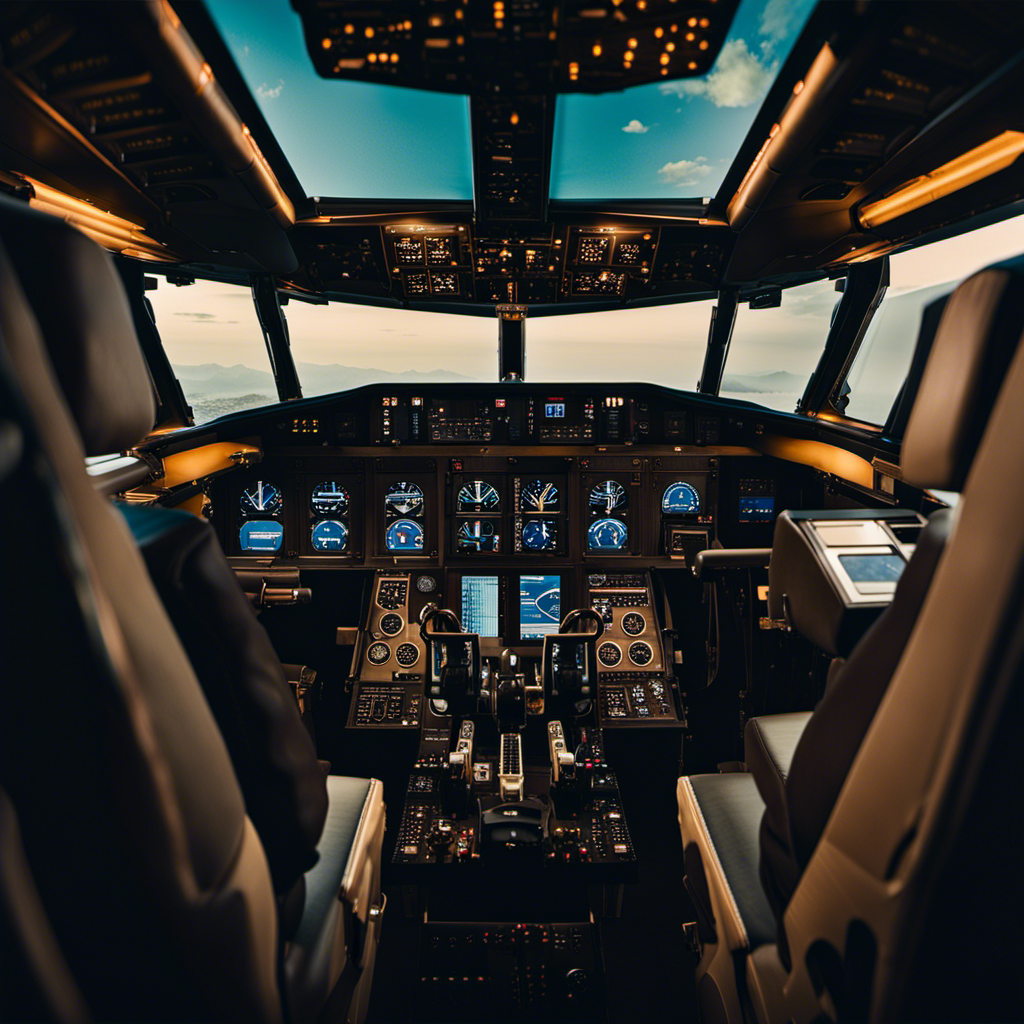So, you’re interested in understanding what glide speed means? Let me break it down for you in simpler language.
Glide speed, my friend, is a term that gets tossed around a lot in the aviation world. It refers to the optimal speed at which an aircraft should be flying during a glide, without the use of power. Understanding this concept is crucial for pilots, as it affects their ability to safely and efficiently control their aircraft in emergency situations.
In this article, we’ll delve into the importance of glide speed, the factors that determine it, and why neglecting it can have serious consequences.
So, buckle up and get ready to soar through the skies of knowledge!
Key Takeaways
- Glide speed is the speed at which an aircraft should maintain for maximum efficiency in gliding.
- Maintaining correct glide speed is crucial for safety and efficiency.
- Factors like aircraft type, wind speed, and altitude determine glide speed.
- Techniques like slip and flaps help control descent rate and glide distance.
Definition of Glide Speed
Glide speed is the speed at which you should maintain to achieve maximum efficiency in gliding. It is crucial to understand the importance of maintaining the correct glide speed as it directly impacts the performance of the aircraft.
When the glide speed is too high, the aircraft will cover more horizontal distance but will descend rapidly, resulting in a shorter glide range. Conversely, if the glide speed is too low, the aircraft will cover less horizontal distance and descend at a slower rate, again reducing the glide range.
Therefore, maintaining the optimal glide speed is essential to ensure the longest possible glide distance and maximize the aircraft’s chances of reaching a safe landing spot. Understanding the impact of glide speed on aircraft performance is an integral part of aviation knowledge.
Importance of Glide Speed in Aviation
The importance of glide speed in aviation cannot be overstated. Maintaining the correct glide speed is crucial for the safety and efficiency of an aircraft during a glide or emergency landing.
Glide speed refers to the airspeed at which an aircraft should be flown to maximize the distance covered while descending without power. It is influenced by various factors, including weight distribution and emergency procedures.
Proper weight distribution ensures that the aircraft remains balanced and stable during the glide, preventing any unwanted pitching or rolling motions. Additionally, understanding emergency procedures, such as configuring the aircraft for a glide and managing the descent rate, allows pilots to maintain the appropriate glide speed.
Factors that determine glide speed include aircraft type, wind speed, and altitude, among others.
Factors that Determine Glide Speed
Understanding the factors that determine glide speed is essential for pilots to ensure a safe and efficient descent during emergency landings. Several factors can affect glide speed, including the aircraft’s angle of attack, weight, and wind conditions.
By adjusting the angle of attack, pilots can control the lift produced by the wings, which directly affects the glide speed. Additionally, the weight of the aircraft plays a significant role in determining the glide speed. A heavier aircraft will have a faster glide speed compared to a lighter one.
Pilots can also utilize techniques such as slip and flaps to maintain the desired glide speed. These techniques help in controlling the descent rate and managing the glide distance.
Understanding these factors and employing the appropriate techniques is crucial for a successful emergency landing.
Now, let’s discuss the weight and balance of the aircraft.
Weight and Balance of the Aircraft
To ensure a safe flight, you need to properly manage the weight and balance of the aircraft. The weight distribution plays a crucial role in maintaining stability and control during flight. One key factor to consider is the center of gravity, which is the point where the aircraft’s weight is evenly distributed. Proper weight distribution ensures that the center of gravity remains within the acceptable limits.
To achieve the correct weight and balance, here are some important considerations:
- Load distribution: Distribute the weight evenly throughout the aircraft to maintain balance.
- Cargo placement: Ensure that heavy items are properly secured and placed near the center of gravity.
- Fuel management: Monitor the fuel levels and distribute it evenly to maintain balance throughout the flight.
- Passenger seating: Assign seats strategically to distribute the weight evenly among the passengers.
By carefully managing the weight and balance of the aircraft, you can ensure a safe and stable flight.
Now, let’s delve into the next topic, which is wing design and configuration.
Wing Design and Configuration
When designing and configuring the wings of an aircraft, it’s important to consider factors such as lift, drag, and stability. Wing efficiency plays a crucial role in achieving optimal performance.
By applying aerodynamic principles, engineers strive to create wings that maximize lift while minimizing drag. This is achieved through careful shaping of the wing’s airfoil, which is the cross-sectional shape of the wing. A well-designed airfoil is able to generate lift efficiently by exploiting the Bernoulli principle, which states that as the speed of a fluid (in this case, air) increases, its pressure decreases. This pressure difference between the upper and lower surfaces of the wing creates lift.
Additionally, wing configuration, including the aspect ratio and wingtip design, further enhances the aerodynamic performance. These design considerations help ensure that the aircraft can efficiently generate lift and maintain stability in flight.
Moving forward, it is important to understand how these wing design principles interact with atmospheric conditions.
Atmospheric Conditions
The atmospheric conditions play a crucial role in determining how an aircraft performs in flight. One important factor to consider is atmospheric stability, which refers to the ability of the air to resist vertical motion. Stable air tends to suppress turbulence, while unstable air promotes it.
Temperature also has a significant impact on aircraft performance. As temperature increases, the air becomes less dense, which affects lift and drag. Hotter temperatures can reduce aircraft performance, particularly at higher altitudes where the air is already thinner.
Understanding the atmospheric stability and temperature variations is essential for pilots to make informed decisions during flight.
Now, let’s delve into calculating glide speed, which is a crucial aspect of aircraft performance.
Calculating Glide Speed
Having understood the impact of atmospheric conditions on aircraft performance, it is now crucial to delve into calculating glide speed.
Glide speed, as the name suggests, refers to the optimal airspeed at which an aircraft should maintain during a glide, maximizing its efficiency.
To calculate glide speed, several factors come into play, such as the aircraft’s weight, wing configuration, and altitude. By considering these variables, pilots can determine the most efficient speed at which the aircraft can cover the greatest distance while descending.
This calculation allows pilots to optimize efficiency during gliding, conserving fuel and ensuring a safe descent.
To further refine the glide speed calculation, pilots often refer to the aircraft’s performance charts, enabling them to make informed decisions regarding airspeed adjustments and descent planning.
Transitioning into the next section, let us explore how to utilize these performance charts effectively.
Using the Aircraft’s Performance Charts
To effectively utilize the aircraft’s performance charts, you should consult the charts to inform your airspeed adjustments and descent planning. These charts provide crucial information for calculating glide distance and understanding the impact of altitude on glide speed.
By referencing the performance charts, you can determine the appropriate airspeed to maintain during a glide, based on the altitude at which you find yourself. As altitude decreases, so does the glide speed. This is due to the decrease in potential energy available to maintain forward motion.
Therefore, it is essential to refer to the charts to ensure you are maintaining the correct glide speed for your altitude. Considering wind and weather conditions plays a vital role in adjusting your glide speed as well, allowing for a safe and efficient descent.
Considering Wind and Weather Conditions
When considering wind and weather conditions, it’s important to make adjustments for a safe and efficient descent. The impact of wind direction on glide speed cannot be overlooked.
Headwinds can decrease the groundspeed, resulting in a longer descent. On the other hand, tailwinds can increase the groundspeed, shortening the descent. It is crucial to account for these wind effects to ensure an accurate estimation of the glide distance.
Additionally, the effect of weather conditions on glide speed must be considered. Adverse weather conditions such as rain, ice, or turbulence can impact the aircraft’s performance, affecting the glide speed. Therefore, it is essential to monitor weather conditions and make appropriate adjustments during the descent.
Understanding these factors will contribute to maintaining a consistent glide speed.
Best Practices for Maintaining Glide Speed
To maintain your glide speed, you should continuously monitor wind and weather conditions. This is crucial for maintaining airspeed and ensuring an efficient descent. It is important to keep in mind that wind can affect your glide speed, either increasing or decreasing it.
If you encounter a headwind, your glide speed will decrease, and you may need to adjust your pitch to maintain the desired airspeed. Conversely, a tailwind will increase your glide speed, requiring you to pitch down slightly to prevent overspeeding.
By constantly assessing wind direction and magnitude, you can make the necessary adjustments to maintain the optimal glide speed for a safe and efficient descent.
Now, let’s move on to the next topic, which focuses on proper aircraft control and trim.
Proper Aircraft Control and Trim
Now that we have established the best practices for maintaining glide speed, let’s delve into the importance of proper aircraft control and trim.
When it comes to achieving and maintaining the desired glide speed, having the aircraft properly trimmed is crucial. Trim refers to adjusting the control surfaces to balance the forces acting on the aircraft, allowing it to maintain a steady glide speed without excessive control inputs. This involves setting the elevator trim to counteract any pitch tendency and maintaining a neutral or slightly nose-down attitude.
By doing so, the aircraft will require minimal control inputs to maintain the desired glide speed, reducing pilot workload and ensuring a smoother flight.
Transitioning into the next section on monitoring airspeed and altitude, it is essential to understand that maintaining proper aircraft control and trim is the foundation for accurate monitoring of these critical flight parameters.
Monitoring Airspeed and Altitude
Make sure you keep a close eye on your airspeed and altitude throughout the flight to ensure a safe and accurate journey. Monitoring these parameters is crucial for maintaining control and making informed decisions.
Here are three important aspects to consider when monitoring airspeed, altitude, and temperature:
-
Monitoring airspeed: Constantly check your airspeed indicator to ensure you’re flying at the appropriate speed for your aircraft. Adjusting your throttle or pitch may be necessary to maintain the desired airspeed.
-
Evaluating glide performance: Keep track of your altitude and glide ratio to determine how far you can travel without engine power. This information is crucial in case of an engine failure or when planning a descent for landing.
-
Analyzing fuel consumption: Regularly monitor your fuel gauges to calculate your fuel burn rate. This will help you estimate the remaining flight time and plan for refueling if necessary.
Making Adjustments for Maximum Efficiency
Keep a close eye on your fuel consumption and adjust accordingly to ensure maximum efficiency during your flight. Maximizing fuel efficiency is crucial for optimizing glide range.
To achieve this, it is essential to make adjustments throughout your flight. One way to do this is by maintaining a steady airspeed that allows you to cover the most distance with the least amount of fuel.
Another strategy is to make use of the aircraft’s engine management system, which can help regulate fuel flow and optimize fuel consumption. By constantly monitoring and adjusting these factors, you can ensure that your fuel is being used efficiently, enabling you to maximize your glide range.
However, in emergency situations, glide speed becomes the primary focus as you aim to safely navigate and land the aircraft.
Emergency Situations and Glide Speed
In emergency situations, it’s crucial to prioritize maintaining a steady airspeed to safely navigate and land the aircraft. As a pilot, I am trained to follow specific emergency landing procedures to ensure the best chance of a successful outcome. These procedures are essential for handling unexpected situations such as engine failure, structural damages, or any other critical issues that may arise during flight.
To perform emergency landings, pilots must meet specific certification requirements, which include extensive training and knowledge of emergency procedures. By adhering to these guidelines, pilots can effectively manage emergencies and make informed decisions to ensure the safety of everyone on board.
Understanding the importance of glide speed and its role in emergency situations is fundamental in successfully executing emergency landing procedures.
Now, let’s discuss engine failure and forced landings.
Engine Failure and Forced Landings
In emergency situations, maintaining the engine is crucial for a safe forced landing. As a pilot, I understand the importance of engine maintenance and the need to follow specific emergency procedures. Here are four key considerations when dealing with engine failure and forced landings:
-
Identify the problem: Quickly assess the situation and determine if the engine failure is due to a mechanical issue or fuel problem.
-
Execute emergency checklist: Follow the aircraft’s emergency checklist to ensure all necessary steps are taken.
-
Establish glide speed: Adjust the aircraft’s speed to the recommended glide speed, which allows for maximum distance covered during descent.
-
Communicate with air traffic control: Inform air traffic control of the emergency situation and provide updates on intentions and actions.
With these procedures in mind, it is now important to choose the best landing spot for a safe forced landing.
Choosing the Best Landing Spot
When choosing the best landing spot, you should prioritize open areas without obstacles for a safer forced landing. This is crucial in emergency situations where engine failure or other issues require you to make a quick decision. By selecting a landing spot with minimal obstacles, you increase your chances of a successful landing and minimize the risk of further damage to the aircraft or potential injuries to yourself and passengers. To help you evaluate potential landing spots, consider the following factors:
| Factors | Description | Importance |
|---|---|---|
| Open Area | Clear of trees/buildings | High |
| Surface Type | Firm and even | Medium |
| Wind Direction | Aligns with runway | Low |
Utilizing Glide Speed to Reach a Safe Landing
Utilizing glide speed enables pilots to reach a safe landing without engine power, increasing their chances of a successful emergency landing. When faced with an engine failure or other emergency situations, knowing how to optimize glide speed is crucial. Here are some techniques for achieving the best glide speed:
- Minimize drag by retracting unnecessary flaps and landing gear.
- Maintain the aircraft’s best glide speed, which is typically indicated on the airspeed indicator.
- Consider wind direction and speed to adjust the glide path.
- Use small, precise control inputs to maintain stability and minimize unnecessary maneuvering.
- Continuously scan the environment for suitable landing spots, prioritizing those within reach based on the glide range.
By mastering these techniques, pilots can maximize their chances of a safe landing.
Transitioning into the next section, training and practice for glide speed maneuvers is essential to ensure proficiency in emergency situations.
Training and Practice for Glide Speed Maneuvers
To become proficient in glide speed maneuvers, you’ll need to undergo thorough training and practice regularly. Developing the necessary skills requires a combination of theory and practical application. Here are some training techniques that can help in mastering glide speed maneuvers:
| Training Techniques | Description | Benefits |
|---|---|---|
| Flight Simulators | Simulate real-world scenarios for hands-on practice | Enhance decision-making skills and emergency response |
| Instructional Videos | Provide step-by-step guidance and demonstrations | Aid in understanding the correct techniques and methods |
| Mock Exercises | Conduct simulated scenarios in controlled environments | Build muscle memory and improve reaction times |
Simulated Engine Failure Exercises
Once you have mastered glide speed maneuvers through training and practice, simulated engine failure exercises will allow you to apply your skills in real-life scenarios without relying on the engine. These exercises are crucial for developing emergency landing techniques and enhancing your ability to safely handle unexpected engine failures.
During these simulations, the engine is intentionally shut down or reduced in power, forcing you to rely solely on the aircraft’s glide capabilities. You will learn to analyze your surroundings, select suitable landing areas, and execute emergency procedures with precision.
These exercises replicate the pressure and urgency of real emergencies, allowing you to fine-tune your decision-making skills and build confidence in your ability to handle critical situations. By practicing simulated engine failure exercises, you will be better prepared for emergency landing procedures, ensuring the safety of yourself and your passengers.
Emergency Landing Procedures
When preparing for emergency landing procedures, it’s important to remember to stay calm and focused throughout the situation. In aviation, glide speed plays a crucial role in executing a safe emergency landing. Here are three key points to consider:
-
Maintain the optimal glide speed: During an emergency landing, maintaining the correct glide speed is crucial. This speed allows the aircraft to maintain the maximum glide range and control while descending.
-
Monitor the airspeed indicator: Constantly monitoring the airspeed indicator helps ensure that the aircraft remains within the appropriate glide speed range. Deviating from this range can lead to reduced control and increase the risk of an accident.
-
Evaluate the landing site: Assessing the landing site is essential to select the most suitable location for the emergency landing. Factors such as terrain, obstacles, and available space should be considered to minimize the impact and maximize the chances of survival.
Understanding and implementing these emergency landing procedures, including the importance of glide speed in aviation, is crucial for pilot safety and successful emergency landings. Moving on to pilot certification requirements, it is necessary to meet specific criteria to obtain the necessary qualifications.
Pilot Certification Requirements
Pilot certification requirements vary depending on the type of aircraft a pilot intends to operate. In the world of aviation, training and safety go hand in hand. The process of becoming a certified pilot involves rigorous training to ensure the highest level of aviation safety. Let’s take a look at the different certification requirements for various aircraft types:
| Aircraft Type | Certification Requirements |
|---|---|
| Single Engine | Private Pilot License |
| Multi-Engine | Commercial Pilot License |
| Helicopter | Helicopter Pilot License |
| Airline Transport | Airline Transport Pilot License |
These certifications involve a combination of flight hours, written exams, and practical tests. Each certification level builds upon the previous one, providing pilots with the necessary knowledge and skills to safely operate their chosen aircraft.
Now that we understand the importance of pilot certification, let’s explore advanced techniques for optimizing glide speed and enhancing aviation safety.
Advanced Techniques for Optimizing Glide Speed
Now that we have discussed the pilot certification requirements, let’s delve into advanced techniques for optimizing glide speed.
As a pilot, it is crucial to understand the concept of wing loading and its impact on glide performance. Wing loading refers to the amount of weight each unit of wing area must support. Higher wing loading results in a faster glide speed, but also reduces the glide ratio.
The glide ratio is the distance an aircraft can travel horizontally for every unit of altitude lost. By adjusting the wing loading, pilots can fine-tune the glide speed to maximize efficiency and reach their desired destination. Understanding the relationship between wing loading and glide ratio is essential for achieving optimal performance during gliding maneuvers.
Now, let’s explore the theory behind speed to fly and how it further enhances our ability to control and optimize glide performance.
Speed to Fly Theory
Understanding the concept of wing loading is crucial for pilots to optimize glide performance by fine-tuning the glide speed. Speed control plays a vital role in energy management during gliding.
The principle behind speed to fly theory is to fly at a speed that maximizes glide range by minimizing sink rate. By adjusting the speed based on the current conditions, pilots can effectively manage their energy and extend the distance they can glide.
This can be achieved by utilizing a combination of lift and drag forces. Lift helps to counteract the effects of gravity, while drag acts as a resistance force. By manipulating these forces, pilots can achieve the optimal glide speed to maintain altitude and glide further without relying on the engine power.
This technique allows pilots to make the most of their gliding experience and reach their destination efficiently.
Next, we will explore the techniques for utilizing lift and drag to extend glide range without relying on the engine.
Utilizing Lift and Drag to Extend Glide Range
To maximize your glide range, you’ll need to effectively utilize lift and drag forces.
Lift is the upward force generated by the wings, while drag is the resistance force acting against the aircraft’s motion through the air. By understanding and managing these forces, you can extend your aircraft’s glide range.
To utilize lift efficiently, you can adjust the angle of attack and maintain the optimal airspeed. This allows the wings to generate maximum lift. Additionally, minimizing drag is crucial. You can achieve this by reducing any unnecessary drag-producing elements, such as retracting landing gear and closing unnecessary openings.
By effectively utilizing lift and drag, you can maximize your glide range and increase the chances of reaching your desired destination.
Now let’s delve into fine-tuning aircraft performance for maximum efficiency.
Fine-tuning Aircraft Performance for Maximum Efficiency
To fine-tune your aircraft’s performance for maximum efficiency, you’ll need to adjust certain factors that affect lift and drag. Here are some key considerations for speed optimization and fuel efficiency:
- Wing design: Ensuring the right wing shape and angle of attack can minimize drag and maximize lift, improving overall performance.
- Weight management: Reducing unnecessary weight by removing excess baggage or fuel can increase your aircraft’s speed and fuel efficiency.
- Engine settings: Fine-tuning your engine’s settings, such as fuel flow and RPM, can optimize performance and reduce fuel consumption.
- Aerodynamic modifications: Adding aerodynamic enhancements like winglets or fairings can reduce drag, allowing for higher speeds and better fuel efficiency.
Common Mistakes and Pitfalls with Glide Speed
In my pursuit of fine-tuning aircraft performance for maximum efficiency, I have encountered common mistakes and pitfalls that can arise when it comes to maintaining glide speed.
One of the most prevalent errors is failing to accurately measure and adjust the aircraft’s glide speed during flight. This can lead to suboptimal performance, increased fuel consumption, and potential safety risks. It is crucial to constantly monitor and adjust the aircraft’s glide speed to ensure optimal efficiency and safety.
Another mistake to avoid is relying solely on the aircraft’s instruments without cross-checking with external references, such as visual cues or other aircraft. By doing so, pilots can ensure more accurate glide speed management and avoid potential errors.
Now, let’s explore the next section that delves into the dangers of overestimating glide range.
Overestimating Glide Range
Overestimating the range of a glide can lead to unexpected fuel shortages and potential emergency situations. When pilots overestimate their glide range, they may not allocate enough fuel for the journey, putting themselves at risk of running out of fuel before reaching their destination.
This mistake often occurs due to overestimating fuel consumption, failing to take into account the impact of altitude on glide range. Higher altitudes can increase the glide range, while lower altitudes may decrease it. It is crucial for pilots to accurately assess their aircraft’s glide range based on altitude and fuel consumption to avoid these dangerous situations.
Failure to maintain proper airspeed is another common mistake that can have severe consequences.
Failure to Maintain Proper Airspeed
Pilots who fail to maintain proper airspeed risk compromising the stability and control of their aircraft. Airspeed control is of utmost importance in aviation, as it directly affects the performance and safety of the flight.
Insufficient airspeed can result in an aerodynamic stall, where the aircraft loses lift and descends uncontrollably. Conversely, excessive airspeed can lead to structural damage or even catastrophic failure. The consequences of improper airspeed control can range from loss of control during takeoff or landing to increased fuel consumption and reduced range.
It is crucial for pilots to constantly monitor and adjust their airspeed based on the specific phase of flight and prevailing conditions. Neglecting to factor in wind conditions can further compound the risks associated with improper airspeed control, leading to unexpected changes in groundspeed and potential loss of situational awareness.
Neglecting to Factor in Wind Conditions
Transitioning from the previous subtopic of "Failure to Maintain Proper Airspeed," it is crucial to explore the next pitfall in aviation: neglecting to factor in wind conditions. When it comes to flying, wind plays a significant role in determining the glide speed of an aircraft. Failing to account for wind direction and strength can lead to dangerous situations and compromised flight performance.
To emphasize the importance of considering wind conditions, let us examine the following table:
| Wind Direction | Impact on Glide Speed |
|---|---|
| Headwind | Decreases speed |
| Tailwind | Increases speed |
| Crosswind | Alters trajectory |
| Variable | Unpredictable |
This table serves as a stark reminder of the potential consequences of disregarding wind conditions. Failing to adjust glide speed accordingly can result in overshooting or undershooting landing areas, exceeding weight limitations, or even losing control of the aircraft.
To conclude, it is imperative for pilots to meticulously assess wind conditions and adjust their glide speed accordingly. Neglecting this crucial aspect can have severe consequences. Now, let us delve into the conclusion and final thoughts on glide speed in aviation.
Conclusion and Final Thoughts on Glide Speed in Aviation
When it comes to glide speed in aviation, it’s vital for you to consider wind conditions and make necessary adjustments for a safe and controlled flight. Throughout this analysis, we have explored the significance of glide speed and its impact on aviation operations.
By neglecting to factor in wind conditions, pilots risk compromising the safety and efficiency of their flights. It is crucial to understand the practical applications of glide speed and how it can be optimized to achieve the desired outcomes.
The conclusion drawn from this analysis is that wind conditions play a critical role in determining the appropriate glide speed. By accurately assessing wind direction and velocity, pilots can make informed decisions and adjust their glide speed accordingly.
This ensures a smooth and controlled descent, enhancing the overall safety and success of the flight.
Frequently Asked Questions
How does wing design and configuration affect glide speed?
The wing design and configuration directly affect the glide speed by influencing the wing efficiency and lift-to-drag ratio. These factors determine how efficiently the aircraft can maintain altitude and glide through the air.
What are some common mistakes and pitfalls to avoid when it comes to glide speed?
Common mistakes and pitfalls to avoid when fine tuning glide speed include neglecting wing configuration, underestimating the impact of weight distribution, ignoring wind conditions, and failing to optimize control surfaces for maximum efficiency.
How can pilots fine-tune aircraft performance for maximum efficiency during glide speed maneuvers?
To fine-tune aircraft performance for maximum efficiency during glide speed maneuvers, pilots can utilize various piloting techniques and consider important aerodynamic factors. These practices optimize the aircraft’s glide performance and enhance overall efficiency.
What are some advanced techniques for optimizing glide speed?
To optimize glide speed, advanced techniques can be employed. These may include adjusting the aircraft’s angle of attack, utilizing speed brakes or spoilers, and employing energy management strategies. How can these techniques be used to achieve maximum efficiency?
What are the pilot certification requirements related to glide speed maneuvers?
To perform glide speed maneuvers, pilots must meet specific certification requirements. These requirements ensure that pilots have the necessary knowledge and skills to safely execute gliding maneuvers while maintaining optimal speed for efficient gliding.
Conclusion
In conclusion, understanding and properly managing glide speed is crucial in aviation. It is the speed at which an aircraft can maintain its altitude without engine power. Factors such as weight and balance, wing design, and wind conditions determine glide speed.
Failure to maintain proper airspeed or neglecting to factor in wind conditions can have detrimental effects on glide range. Ensuring the correct glide speed can prevent potential disasters and ensure the safety of the aircraft and its passengers.
As the saying goes, "A stitch in time saves nine."
With a heart that soars as high as the skies, Aria, affectionately known as “Skylark,” is the driving force behind Soaring Skyways. Her journey into the gliding world began as a young dreamer gazing up at the soaring birds, yearning to experience the weightlessness and freedom they embodied. With years of experience both in the cockpit and behind the scenes, Aria’s commitment to the gliding community is unwavering.










